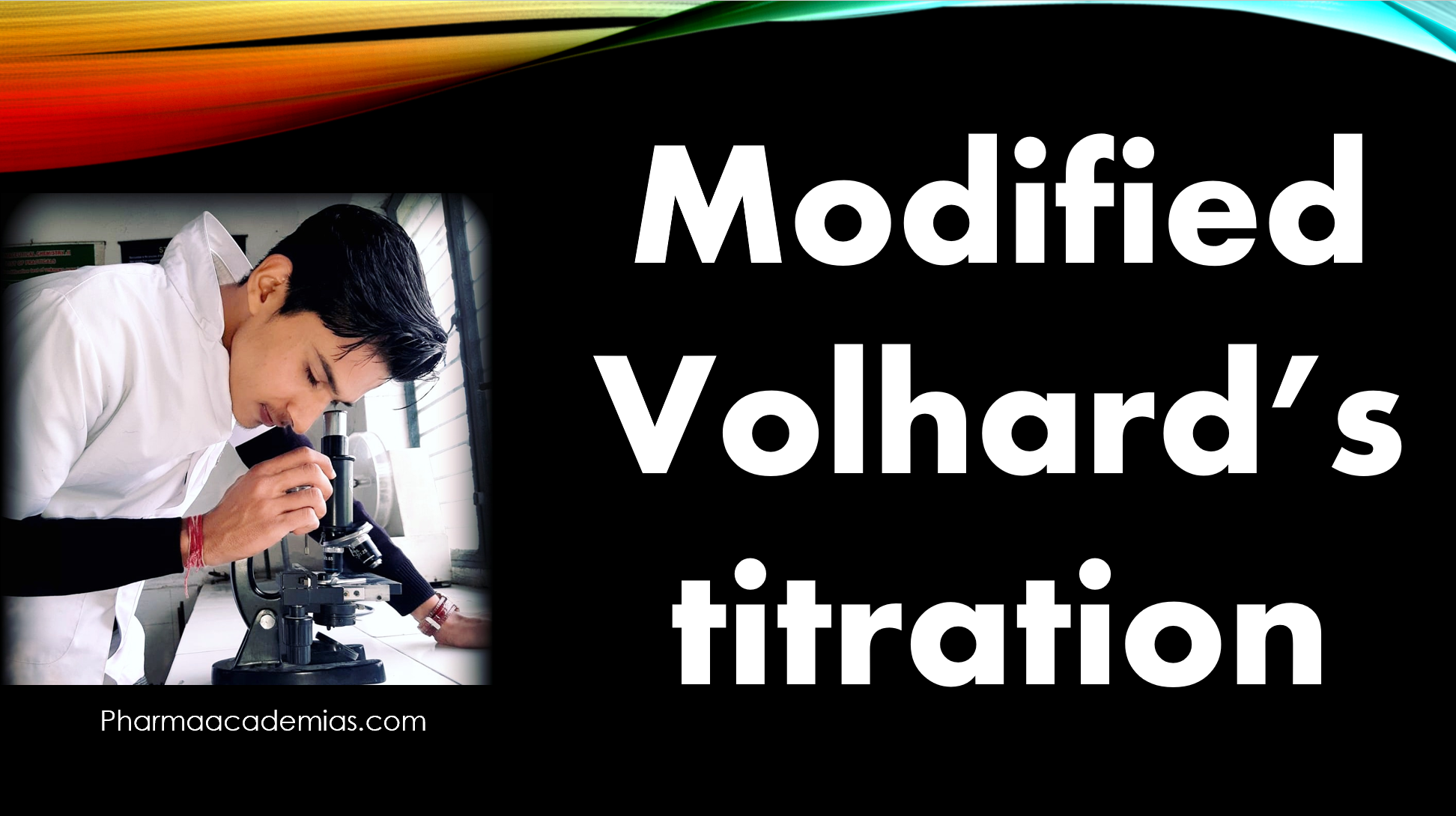Modified Volhard’s titration is a variation of the classical Volhard titration method, which scientists use to determine the concentration of halide ions in a solution. Researchers value this modification, especially when they cannot apply the classical Volhard method due to the presence of interfering substances that can react with silver ions (Ag⁺). The modified Volhard method employs a back-titration approach to overcome these interferences.
Key Steps and Components of Modified Volhard’s Titration:
1. Preparation of the Sample:
Prepare the sample that contains the halide ions, and consider the interfering substances without removing them during the titration.
2. Titrant Solution:
We use a standardized solution of silver nitrate (AgNO3) as the titrant. This solution contains Ag⁺ ions.
3. Indicator:
We use an appropriate indicator to detect the endpoint of the titration. Potassium chromate (K2CrO4) is a common choice for the indicator, and it gives the solution a yellow color.
4. Titration Procedure:
Take a small volume of the sample solution in a flask or beaker.
Add a few drops of the indicator solution (potassium chromate) to the sample, imparting a yellow color to the solution.
Initiate the titration by introducing the standardized silver nitrate (AgNO3) into the sample solution.
Continue the titration until you attain the endpoint. Detect the endpoint by observing the formation of reddish-brown or reddish-silver chromate (Ag2CrO4) when all halide ions are consumed, and there is an excess of silver ions present.
Record the volume of the titrant solution required to achieve the endpoint.
5. Back-Titration:
After reaching the endpoint, add a standardized solution with a known titrant concentration that can react with the interfering substance. This titrant reacts with the interfering substance.
6. Calculation:
Calculate the concentration of the halide ions by taking into account the volume of the titrant solution used in the back-titration and the stoichiometry of the reactions.
Advantages and Considerations:
– Modified Volhard’s titration is useful when interfering substances are present that can react with silver ions during the initial titration.
– It allows for accurately determining halide ions, considering interfering substances.
– Careful sample preparation and reagent handling are crucial for precise results.

